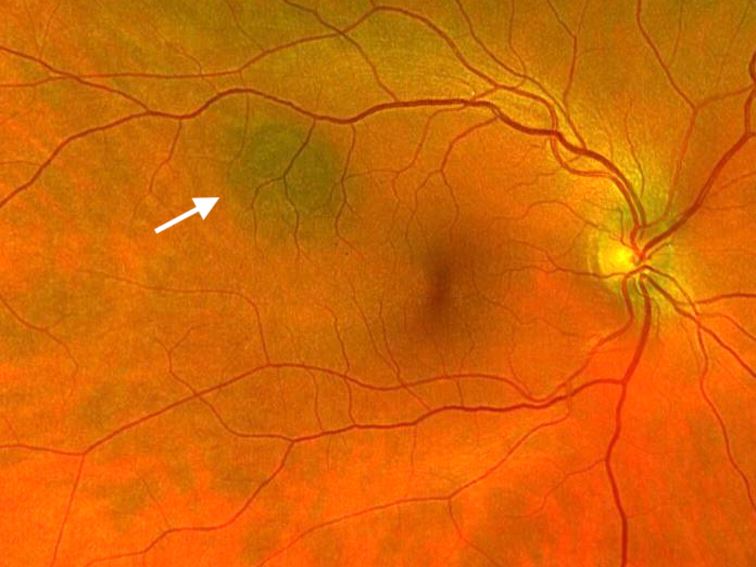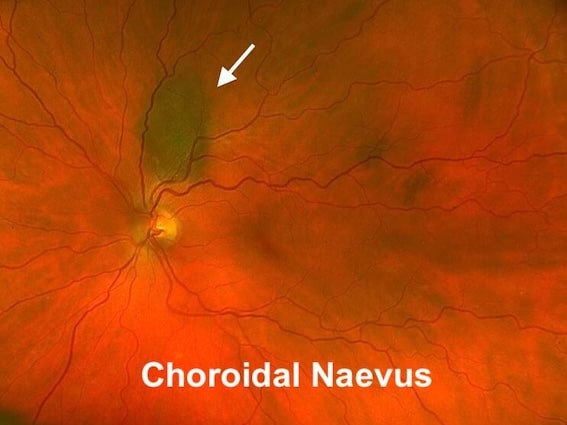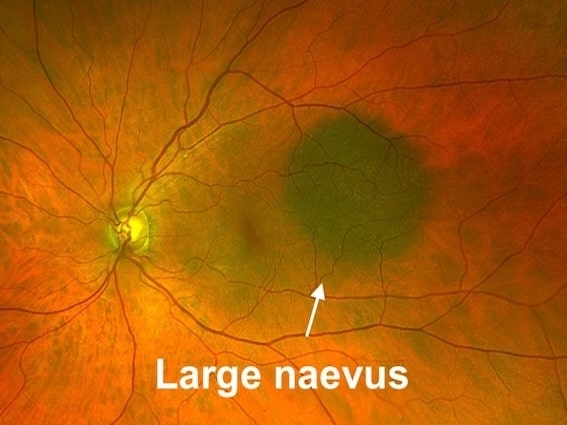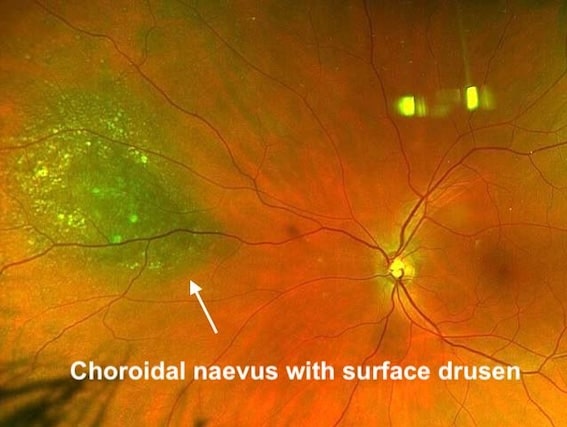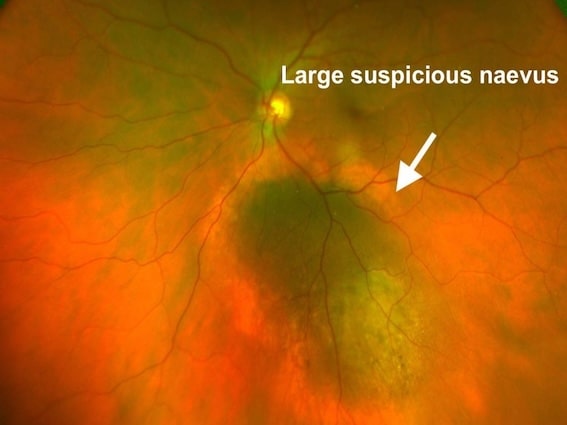Choroidal naevus or freckle is a pigmented (darkly coloured) patch seen in the retina (back of the eye). It is similar to skin naevi (moles) that may be found in other parts of the body. The eyes contain cells that can produce pigment, similar to the skin, and these cells can cause these “moles” to develop inside the eye.
Choroidal naevi are probably present at birth. They are often stable but may slightly grow in childhood and rarely beyond puberty.

